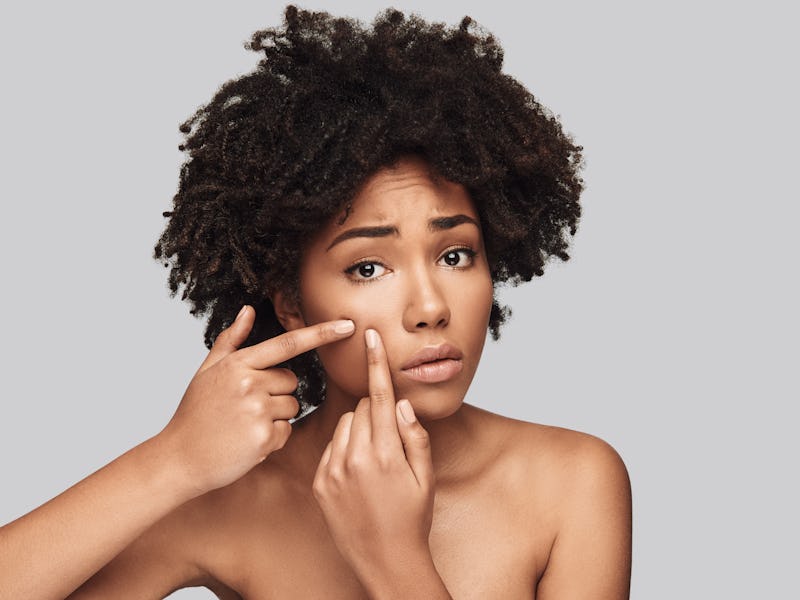New understanding of teenage pimples could lead to clearer skin for all
Scientists say acne is more normal than you think.

It’s universally understood that acne, the most common skin condition in the United States, is a major pain. What’s less understood, and has perplexed scientists for decades, is exactly what causes the dreaded and persistent condition.
In a new article published Thursday in the journal Trends in Immunology a team of scientists argue that the conventional wisdom surrounding teenage acne, also known as acne vulgaris, is all wrong. The authors, all researchers based out of Hungary, hypothesize that acne isn’t something that happens randomly or accidentally to teens. Instead, acne is a natural, temporary inflammatory state triggered when maturing skin is exposed to new microbes and increased sebum production. Sebum is a light yellow, oily substance produced by glands in the skin.
In other words, having acne is totally normal — even if feels like pimples are attacking you personally.
“Our hypothesis, that acne is a naturally developing, transient inflammation state, rather than a pathological skin disease, challenges conventional thinking,” lead author Andrea Szegedi, M.D., Ph.D., a dermatologist from the University of Debrecen in Hungary, explains. “This hypothesis incorporates recent scientific data and may explain special clinical characteristics of acne.”
How acne forms.
While acne impacts people of all ages, this article focuses on teen acne — the sort that tortures middle schoolers and breeds in sweaty high school locker rooms. Between 44 and 95 percent of all teenagers will deal with acne. The condition appears when pores in the skin clog with dead skin cells, sebum, and hair resulting in a variety of blemishes: blackheads, whiteheads, nodules, cysts, papules, or pustules.
This team suggests that the seeds of acne are planted young: After birth, the skin hosts a microbial community made up of tiny bacteria, fungi, archaea and viruses that live in the skin. This microbiota evolves along with the skin immune system, which helps the skin actively fight infections.
This microbiota is relatively stable throughout childhood, which is why kids younger than 13 have clearer skin. But puberty hits, microbes change, and new bacteria are introduced. As androgenic hormones flood the system, the body also starts producing more sebum, which keeps skin from drying out. Some have called sebum “oil of the acne flame,” and areas with heavy sebum include the face, scalp, and upper back, common territory for pimples. The authors speculate that sebum may play a key role in driving inflammation in the skin.
This article argues that teenage acne is a result of this elevated level of sebum and the microbiota shift. Often, the team explains, as teens become adults their skin microbiota stabilizes, and the acne spontaneously goes away.
To date, it’s been unclear why acne erupts. Some study-backed suggestions include: hormonal factors during puberty and pregnancy, conditions like polycystic ovarian syndrome (PCOS), the use of certain medications, exposure to too much sun, or even just sweaty, irritating clothing can give rise to acne. Research also shows genes, a family history of acne, and stress can contribute.
Acne treatment options range from over-the-counter face washes to chemical peels. Most types of acne can be treated effectively, but there aren’t many quick fixes: Acne sufferers typically have to stick to an acne-fighting regimen for at least four to six weeks to see results.
The authors of this article hope their reframing of acne will prompt more, targeted research on acne. They reason that rethinking the way acne is caused and treated could influence the scores of teens struggling with the condition. Acne treatment, they argue, should focus on restoring a symbiotic relationship between skin and its microbial and chemical components, which exists during childhood and often resolves later in life.
It’s also established that the image issues that often come along with acne can lower self-esteem and confidence. Improving acne treatment means improving the lives of people — but science has to catch first.
Thesis:
We propose that acne propose that acne vulgaris represents a naturally developing, transient inflammatory interaction of adolescent facial skin with its new microbial/chemical milieu (Cutibacterium acnes, sebum), replacing a state of previous childhood skin homeostasis. This concept might explain why acne is characterized by strong regional and age specificity, prevalent occurrence, and resolution